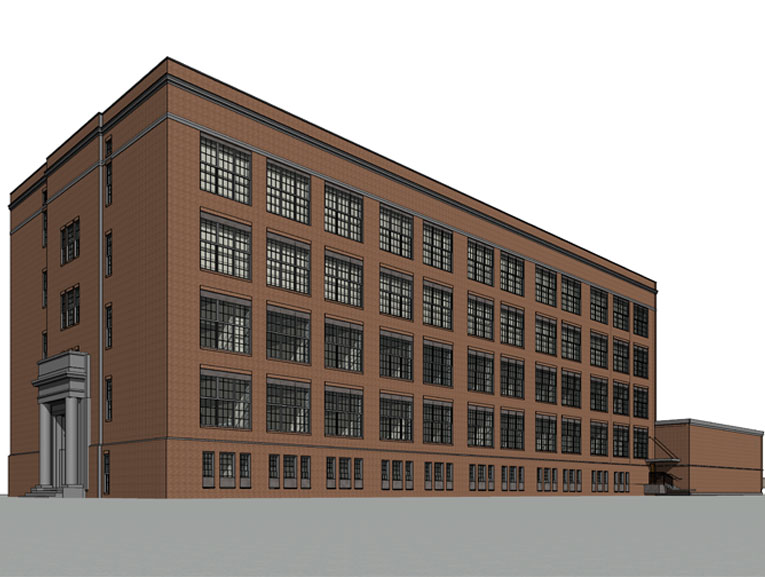In the dynamic world of architecture, effective communication lies at the heart of every successful project. From conveying design concepts to coordinating construction activities, seamless communication among stakeholders is essential for bringing architectural visions to life. In this blog, we delve into the transformative role of Building Information Modeling (BIM) services in enhancing communication within architectural projects, exploring how this technology fosters collaboration, improves decision-making, and drives project success.
Understanding Architectural BIM Services
Building Information Modeling (BIM) is a digital representation of physical and functional characteristics of a building. BIM services enable architects, engineers, contractors, and other project stakeholders to collaborate on a shared platform, accessing and managing project data throughout its lifecycle. By creating a comprehensive and accurate digital model, BIM services facilitate effective communication and coordination among multidisciplinary teams.
Facilitating Collaboration
One of the primary benefits of architectural BIM services is their ability to foster collaboration among project stakeholders. Through a centralized digital platform, architects, engineers, and contractors can collaborate in real-time, sharing design updates, resolving conflicts, and making informed decisions collectively. This collaborative approach promotes transparency, minimizes errors, and accelerates project delivery, ultimately enhancing project outcomes.
Improving Design Visualization
Architectural services empower stakeholders to visualize design concepts in a highly realistic and interactive manner. By creating 3D models enriched with detailed information, BIM enables architects to convey their design intent more effectively to clients and other project stakeholders. This enhanced visualization capability facilitates clearer communication, enabling stakeholders to provide feedback, make revisions, and align expectations more efficiently.
Enhancing Coordination and Clash Detection
Effective coordination among architectural, structural, and MEP (mechanical, electrical, and plumbing) systems is critical to the success of any building project. Architectural services facilitate clash detection by overlaying different building systems within the digital model, identifying potential conflicts early in the design phase. This proactive approach to coordination minimizes costly rework during construction, streamlines project schedules, and improves overall project efficiency.
Streamlining Documentation and Reporting
Architectural BIM services streamline the generation of construction documentation and project reports, further enhancing communication among project stakeholders. By automating the extraction of drawings, schedules, and quantities from the BIM model, architects can produce accurate and comprehensive documentation with minimal effort. This standardized approach to documentation ensures consistency, reduces errors, and enhances clarity in communication throughout the project lifecycle.
Supporting Remote Collaboration
In an increasingly globalized industry, architectural BIM services facilitate remote collaboration among geographically dispersed teams. Through cloud-based BIM platforms, stakeholders can access project data and collaborate in real-time from anywhere in the world. This capability enables seamless communication and coordination, allowing project teams to overcome geographical barriers and work together effectively across different time zones.
Enabling Client Engagement and Feedback
Architectural BIM services empower clients to actively engage in the design process, providing feedback and making informed decisions based on the digital model. By offering clients access to the BIM model through visualization tools and virtual reality (VR) technology, architects can solicit feedback, address concerns, and ensure alignment with client expectations. This interactive approach to client engagement fosters trust, enhances satisfaction, and ultimately leads to successful project outcomes.
Challenges and Considerations
While architectural BIM services offer significant advantages in enhancing communication, they also present certain challenges and considerations. These may include initial investment costs, staff training requirements, interoperability issues, and data security concerns. Addressing these challenges requires careful planning, ongoing support, and a commitment to continuous improvement in BIM implementation strategies.
Conclusion
Architectural BIM services have revolutionized communication within the architectural industry, offering a powerful toolkit for collaboration, coordination, and decision-making. ENGISOFT ENGINEERING – BIM Staffing & BIM Services by enabling stakeholders to work together more effectively, visualize design concepts more vividly, and streamline project documentation more efficiently, BIM technology enhances communication throughout the project lifecycle, ultimately driving improved project outcomes and client satisfaction. As the industry continues to embrace digital transformation, BIM services will remain indispensable tools for shaping the built environment of the future.











